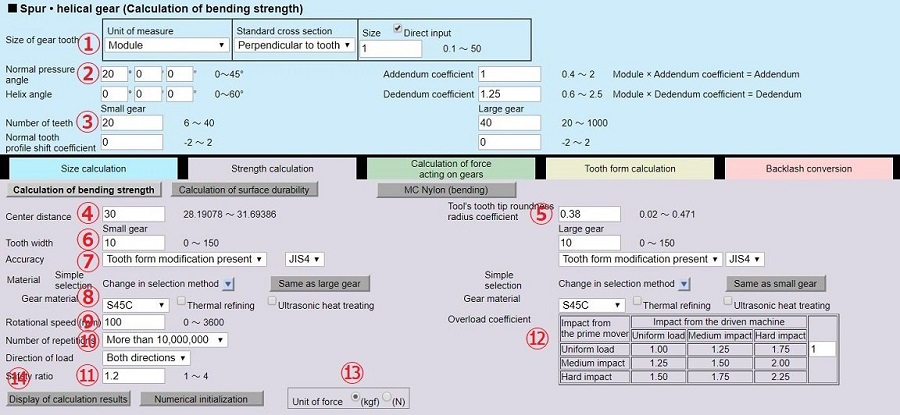Versions Compared
Key
- This line was added.
- This line was removed.
- Formatting was changed.
Gear Selection Workflow
To maximize the functionality of a gearset while managing cost and maintenance, it is important to consider many different factors while selecting the gears. This includes the operating loads, operating environment, available lubrication, system cost, durability requirements, and noise requirements. The following list has been summarized from a KHK Gears webpage: HOW TO SELECT GEARS.
- Select a gear type and tooth profile
- If the input and output shafts are parallel and non-intersecting, spur gears are an excellent choice if noise is not a concern. They are cheaper and lower cost than other options.
- If the input and output shafts are parallel and non-intersecting, but noise and vibration is a concern, helical gears should be used.
- Select a gear material
- If loads are light and NVH is a concern, as is the case with small consumer appliances, automotive seat and latch actuators, or toys, plastic gears are a good choice.
- If loads are high and costs are not a concern, ground, hardened steel gears are an excellent choice. Steel gears can also be shaped, hobbed, or milled.
- For applications where the gears cannot be submerged in oil or lubricated regularly, bronze or brass gears can be paired with steel gears to mitigate wear.
- Select a manufacturing process or gear vendor
- For mass production, injection molded or sintered / pressed metal powder gears are a good choice.
- For gears requiring moderate precision, metal gears can be hobbed or shaped. The resulting tooth to tooth error is larger than grinding, but acceptable for most applications.
- For gears requiring high precision, metal gears should be ground. This process produces the most precise gears, especially if top of the line machines are used.
- Ontario Drive and Gear, located in New Hamburg, Ontario, produces metal gears using hobbing, shaping, and grinding processes. They can produce and measure gears and shafts to tolerances less than 10 microns.
- RushGears.com produces a variety of gears on short turnaround times using a variety of processes, including grinding.
| Table of Contents |
|---|
Gear Selection - Waterloo Formula Electric Hub Motors
In 2016, Waterloo Formula Electric, a student team working in the SSDC, designed custom hub motors to power their electric racecar. One of the key design features was a planetary gearset to reduce the motor speed and increase the torque available to the wheels.
A planetary gearset was chosen because of the symmetric gear loading, coaxial input and output shafts, and because of the available manufacturing facilities. The sun gear is the input and the output is the carrier. The ring is fixed to the hub motor casing, which also functions as an upright.
|
Waterloo Formula Electric 2016 Capstone Project
Calculator for Gear Selection
KHK Gears
KHK Gears has made a very complete gear calculator available to registered users. This tool can be used to design gears after the basic parameters (tooth count, ratio, bore size, and face width) are selected.
Engineers Edge
Engineers Edge also has a gear tooth strength calculator that can be used to estimate the maximum possible load on a gear tooth.
KHK Gear Design Calculator
